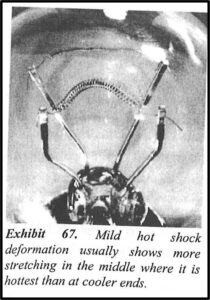
Knott Laboratory provides forensic engineering and animation, Civil & Structural, and Fire & Explosion Investigation services to reconstruct accidents.
Hot Shock in Accident Reconstruction
Proving or rebutting the reported use of lights or signals in an accident case
Did you know we can determine if someone was actually using their turn signal?
On vehicles with incandescent lamps (not LED bulbs), our engineers can determine if the bulb of a headlight, brake light, running lights, flashers, or turn signal was in use at the moment of a crash.
When the lamps are turned on, the filaments are heated to a high enough temperature to make the metal more ductile, or simply put, the filaments are more prone to deformation. “Hot shock” occurs when the hot filament of incandescent lamps deforms (i.e., stretches out or uncoils) due to the “shock” from an impact.

On accident cases, the use of indicators or visibility is often a pivotal issue in determining cause and fault. Our engineers can perform hot shock analysis to answer those questions.

